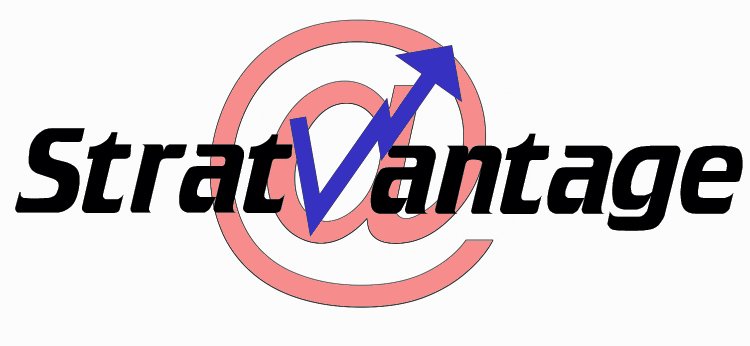Just Some Short Ones
This time, we’ve got several shorter articles on topics of interest.
- Memory Goes 3D: Thomson Multimedia announced it will use three dimensional write-once memory from Matrix Memory in memory cards that can be used to store digital photos or music.Matrix Memory’s patented technology allows them to build 3-dimensional memory by stacking memory arrays vertically, like towers of blocks. The resulting structure can store data for more than 100 years. The technique promises even higher memory density in the future as Matrix adds more layers onto the same chip.
Using existing technology, you can already plug a half a gigabyte of memory into the same PC slot that used to hold 36MB or 64MB.Things will really get interesting when you can plug a terabyte in the same slot. (Don’t worry. Software developers will find a way to fill all that memory.)
I’ve written before about carbon nanotube memory and Nantero, which has a patented process for producing it. If commercialized, this technology will leave silicon-based techniques, like Matrix’s, in the dust. So even an innovation like the Matrix card could have a short shelf life.Although the Matrix cards plug into cameras, Thomson is working on card readers that will allow consumers to view digital photos on a television as well as in cameras and computers, said David Geise, Thomson’s vice president of accessories products. Plus, the cards will cost about $10, which is less than a third of the price of similar flash memory cards. The advantage of flash memory, however, is that you can erase and rerecord data on them, unlike the Matrix cards, which record the data permanently.
News.com - Cute Intel: The CIA’s own technology “accelerator”, In-Q-Tel, is getting more and more involved in technologies that can process massive amounts of data and highlight potential terrorist activities. In-Q-Tel (the Q honors James Bond’s gadget master) was started by the CIA in 1999 to find new technologies that might be useful to the Agency’s mission. It’s not the biggest VC in the world, with about $30 million a year to invest, but post-9/11 it has shown increasing interest in technologies that can make connections in massive amounts of information. For example, search engine Northern Light has teamed with In-Q-Tel to develop an advanced multilingual search system that will crawl Web sites identified by classification experts, create a database of relevant information and employ Northern Light’s multiple-factor relevance ranking algorithm to order the results.The CIA is also experimenting with data analysis software used by some casinos that tracks gambling cheaters. The Company will use the software to detect suspected terrorists and their associates when they make airline, hotel or rental-car reservations.The software, developed by Systems Research & Development Inc. (SRD), searches major computerized reservations and global distribution systems looking for non-obvious relationships. SRD said it can check a passenger’s name, address, phone number and other identifying information against those of suspected terrorists. The largest prototype examines data from 4,000 sources with information on about 1 million people.
If this sort of application doesn’t make you shiver, consider other potential uses, such as finding tax cheats, or contributors to unpopular causes, or people critical of government policies.
CNN - Faster Wireless: Intersil Corporation has announced the first chip set designed to support the IEEE 802.11g draft standard. Big deal, you say? Well 802.11g is way faster than 802.11b, AKA Wi-Fi, which pokes along at a measly 11Mbps.The new chip set, operating in the 2.4 Ghz band, will enable data transmission speeds of up to 54Mbps. That’s more than half the speed of the fastest widely-deployed wireline LANs, which run at 100Mbps, and 1,024 times as fast as a 56Kbps modem. As if that’s not enough, the new chip sets will have a 30 percent range advantage over similarly speedy 802.11a systems and will consume less power.
This technology will first be seen in PC Card-based systems for laptops, but it won’t be too long before the chip set is built into more-portable devices, like PDAs and cell phones. Lest we get too excited, the new standard is still a short-range connectivity solution; coverage is likely to be about 100 feet vs. 300 feet for 802.11b.
802.11 Planet - New Jargon – Digital Hubs: These days hardly a week goes by without a new buzzword. Well, here’s the latest: digital hubs. These are home-based wireless transmitters that let consumers manage, store and distribute a vast amount of content, including TV broadcasts, movies, audio and Web information.These devices, typically 802.11-based, will let you distribute on-demand content to anywhere in the home, and, intentionally or not, to your immediate neighbors, or, if you like, over the Internet.
Of course, there’s trouble in paradise, in the form of content owners who foresee another Napster disaster. (OK, I won’t argue at this pointwhether Napster really was a disaster or not). The Copy Protection Working Group, a consortium of TV networks, Hollywood studios, and consumer electronics firms, wants all content tagged, supposedly invisibly and inaudibly, so TVs, DVD players, personal video recorders, and other devices could prevent a broadcast from being stored digitally. They want to use a Digital Rights Management (DRM) scheme similar to the Digital Transmission Content Protection (DTCP) method created by Intel, Hitachi, Sony, Toshiba and Matsushita. DTCP, however, is focused on wireline connectivity.
Although many in the entertainment device industry think that encrypting and decrypting wireless transmissions might be too large a computational challenge for consumer grade equipment, unfortunately, RSA, a leading security firm, recently announced Fast Packet Keying, a technique that allows individual wireless data packets to be encrypted and decrypted rapidly. So it won’t be long before Disney gets to say whether you can transmit the latest *NSync concert up to Junior’s computer so you don’t have to watch it in the living room.
802.11 Planet
